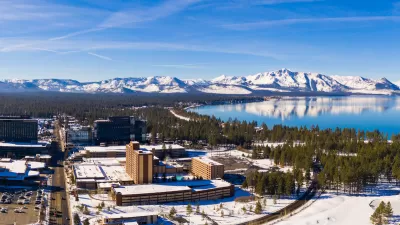The Gulf Coast is home to diverse ethnic and racial communities that have already endured decades of pollution from chemical and petroleum industries. The BP leak may be the "nail in the coffin" for many of these communities, writes Jordan Flaherty.
The BP oil disaster is not only ravaging ecosystems, it is threatening entire coastal communities, many of them locations of distinct and centuries-old African-American and Native American cultures. According Flaherty, the leak is also just the latest incident in a long line of industrial contamination and environmental racism that have ravaged these communities over decades:
"[I]n the early part of this century, the oil companies took advantage of the fact that people living on the coast were isolated by language and distance and laid claim to their land. Over the past several decades, these companies have devastated these idyllic communities, creating about 10,000 miles of canals through forests, marshes and homes...at least five Louisiana towns - all majority African-American - have been eradicated due to corporate pollution in recent decades.
So, late last month, when oil started washing up on the shores of nearby Lake Chien and fishing season was canceled before it had even begun, [French speaking Native-American] members of Pointe-au-Chien took the news as another nail in the coffin of the lifestyle they had been living for generations."
FULL STORY: Cultural Extinction

Planetizen Federal Action Tracker
A weekly monitor of how Trump’s orders and actions are impacting planners and planning in America.

Maui's Vacation Rental Debate Turns Ugly
Verbal attacks, misinformation campaigns and fistfights plague a high-stakes debate to convert thousands of vacation rentals into long-term housing.

San Francisco Suspends Traffic Calming Amidst Record Deaths
Citing “a challenging fiscal landscape,” the city will cease the program on the heels of 42 traffic deaths, including 24 pedestrians.

Amtrak Rolls Out New Orleans to Alabama “Mardi Gras” Train
The new service will operate morning and evening departures between Mobile and New Orleans.

The Subversive Car-Free Guide to Trump's Great American Road Trip
Car-free ways to access Chicagoland’s best tourist attractions.

San Antonio and Austin are Fusing Into one Massive Megaregion
The region spanning the two central Texas cities is growing fast, posing challenges for local infrastructure and water supplies.
Urban Design for Planners 1: Software Tools
This six-course series explores essential urban design concepts using open source software and equips planners with the tools they need to participate fully in the urban design process.
Planning for Universal Design
Learn the tools for implementing Universal Design in planning regulations.
Heyer Gruel & Associates PA
JM Goldson LLC
Custer County Colorado
City of Camden Redevelopment Agency
City of Astoria
Transportation Research & Education Center (TREC) at Portland State University
Jefferson Parish Government
Camden Redevelopment Agency
City of Claremont





























